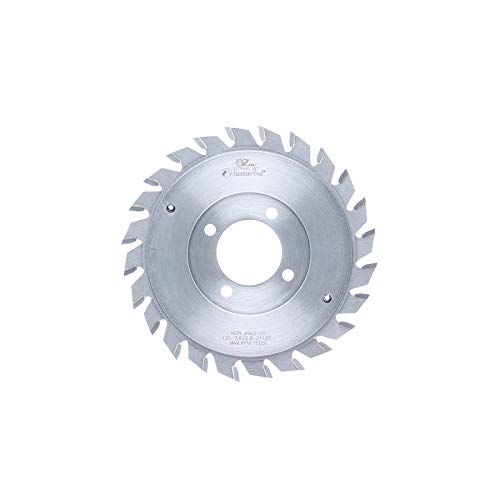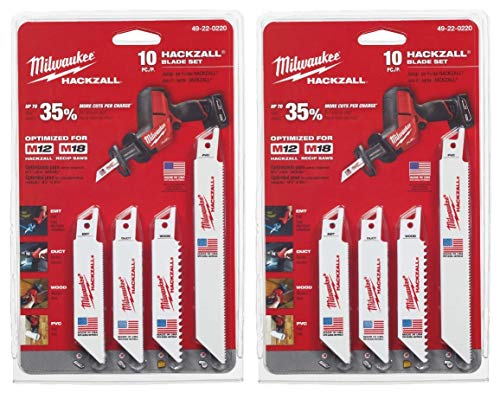
Shims are essential for various woodworking projects, as they help to create precise and level surfaces. While shims can be purchased at a hardware store, making your own shims with a circular saw can save you time and money. In this article, we will guide you through the step-by-step process of creating shims using a circular saw.
Step 1: Choose the Right Materials
Before you start making shims, it is important to choose the right materials. Ideally, you should use a hardwood such as oak or maple, as these types of wood are durable and can withstand pressure. It is also crucial to select boards that are free of knots or any other defects that could affect the stability of the shim.
Note: It is recommended to have a variety of thicknesses for shims, ranging from 1/32 to 1/4 inch, to accommodate different leveling needs.
Step 2: Measure and Mark
Once you have your chosen hardwood boards, measure and mark the desired thickness for your shims. Use a ruler or tape measure to accurately measure the thickness, and make markings on the board accordingly. These markings will serve as a guide for cutting the shims with the circular saw.
Note: It is advisable to make multiple markings on the board to ensure that you have enough shims for your project.
Step 3: Cut the Shims
Now it’s time to cut the shims using a circular saw. Ensure that you wear appropriate safety gear, such as safety goggles and work gloves, to protect yourself during this process. Align the circular saw’s blade with the marked lines on the board and carefully cut along the lines. Take your time and make slow, steady cuts to ensure accuracy.
Note: It is important to use a sharp blade on the circular saw to ensure clean and precise cuts. Replace the blade if it starts to become dull.
By following these simple steps, you can easily make your own shims using a circular saw. Remember to measure and mark accurately, choose the right materials, and practice caution while cutting. With your homemade shims, you’ll be able to achieve precise and level surfaces for your woodworking projects.
What Are Shims and Why They Are Used in Carpentry
Shims are thin, wedge-shaped pieces of material that are commonly used in carpentry. They are primarily used to level or align objects such as cabinets, furniture, and doors. Shims are typically made from wood, plastic, or metal, and they come in various sizes and thicknesses.
One of the main reasons shims are used in carpentry is to compensate for uneven or irregular surfaces. When installing cabinets or doors in a space with uneven floors or walls, shims can be used to fill in the gaps and create a level surface. They can also be used to adjust the position of a door or cabinet to ensure proper alignment.
In addition to leveling and aligning, shims are also used to provide stability and support. For example, when installing windows, shims are placed between the window frame and the rough opening to ensure a solid and secure fit. Shims can also be used to reinforce joints and connections between different wooden pieces, making them more stable and durable.
Another important use of shims is in construction projects where precise measurements are required. Shims can be used to fine-tune the position of structural elements such as beams and columns. By carefully inserting shims in strategic locations, carpenters can ensure that everything is perfectly aligned and level.
Overall, shims are an essential tool in carpentry because they provide a simple and effective solution for leveling, aligning, and stabilizing various objects and structures. Whether it’s installing cabinets, doors, windows, or supporting beams, shims play a crucial role in achieving precise and professional results.
Materials and Tools Needed for Making Shims
In order to make shims using a circular saw, there are a few materials and tools that you will need to have on hand. These include:
Materials:
- Wooden boards or plywood sheets
- Pencil
- Measuring tape
- Clamps
- Screws or nails
- Sandpaper or a sander
- Wood glue
Tools:
- Circular saw
- Workbench or sawhorse
- Hand saw or jigsaw (optional)
- Screwdriver or hammer
- Drill
Having the right materials and tools will ensure that you can properly and safely make shims with your circular saw. The wooden boards or plywood sheets will serve as the main material for creating the shims. Make sure they are of the appropriate thickness and size for your needs.
Using a pencil, measuring tape, and clamps, you will be able to mark and secure the wood for cutting. The screws or nails will help attach the shims to their desired location. Sandpaper or a sander can be used to smooth out any rough edges or uneven surfaces.
In some cases, you may also need to use wood glue to secure the shims in place. The circular saw will be the primary tool for cutting the wood, so make sure it is in good working condition. Additionally, having a workbench or sawhorse to support the wood while cutting is essential for accuracy and safety.
Depending on your specific needs and preferences, you may choose to use a hand saw or jigsaw as an alternative to the circular saw. A screwdriver or hammer will be necessary for attaching the shims, and a drill may be required for creating pilot holes or countersinking screws.
By having all of these materials and tools ready, you will be well-prepared to make shims with your circular saw and achieve the desired results.
Steps to Make Shims with a Circular Saw
Shims are thin pieces of material that are used to fill gaps and level surfaces. They are commonly made out of wood and serve as a foundation for various construction and woodworking projects. Making your own shims with a circular saw is a straightforward process that can save you time and money. Follow these steps to create customized shims for your next project:
- Prepare the tools and materials you will need for this project. This includes a circular saw, a piece of plywood or any other suitable wood material, a measuring tape, a pencil, and clamps.
- Take the piece of wood and measure the desired width of the shim using a measuring tape. Mark the measurement on the wood with a pencil.
- Secure the wood piece firmly using clamps to prevent it from moving during the cutting process.
- Set the circular saw to the desired height. This should be slightly thicker than the width of the shim you want to create.
- Align the circular saw blade with the marked measurement on the wood. Hold the saw firmly and start the cutting process. Slowly move the saw along the marked line, applying even pressure.
- Continue cutting until you have reached the end of the wood piece. Make sure to follow the marked line accurately to achieve a straight and precise cut.
- Repeat the process for additional shims, if necessary. Measure and mark the desired width on the wood, secure it with clamps, adjust the saw height, and make the cuts.
- Once you have finished cutting all the shims, remove the wood piece from the clamps. Inspect the shims for any rough edges or imperfections.
- If needed, use sandpaper to smooth out any rough edges and make the shims even and uniform in thickness.
- Lastly, clean up the work area and store your shims in a safe place for future use.
Now you have successfully made shims with a circular saw. These custom-made shims will come in handy for various construction and woodworking projects where precise leveling or filling of gaps is required.
Tips for Using Shims in Carpentry Projects
When working on carpentry projects, shims can be an essential tool in achieving level and plumb surfaces. Here are some useful tips to keep in mind when using shims:
1. Choose the Right Material
Shims can be made from a variety of materials, including wood, plastic, and metal. Consider the specific needs of your project when selecting the material. Wood shims are commonly used in carpentry due to their versatility and availability.
2. Use Shims to Level Surfaces
Shims are perfect for leveling surfaces such as countertops, cabinets, or furniture. Insert the shim into the gap between the uneven surface and the supporting structure. Tap it gently to adjust the level until it reaches the desired position.
3. Ensure Proper Support
Before using shims, it’s important to ensure that the supporting structure is stable. Shims are intended to provide minor adjustments, not to compensate for major structural issues. Repair any underlying problems before resorting to shims.
4. Trim Shims for Precision
If your shim is too thick or wide for your project, you can easily trim it down to the required size. Use a utility knife or a saw to carefully cut and shape the shim. Always measure and mark accurately before cutting to avoid mistakes.
5. Secure Shims in Place
When you have achieved the desired level, secure the shims in place using glue or nails. This will prevent them from moving or shifting over time. Be careful not to overdrive nails as it may cause damage to the surrounding materials.
Remember, shims are a temporary solution and should not be relied upon as a long-term fix for structural issues. If you encounter significant leveling or stability problems, consult a professional carpenter or contractor.






